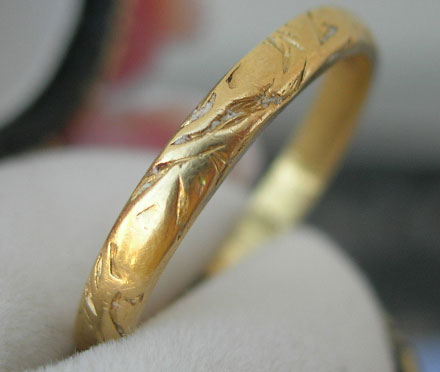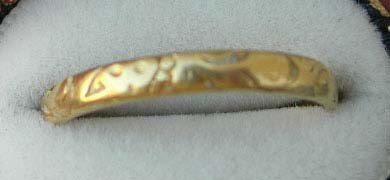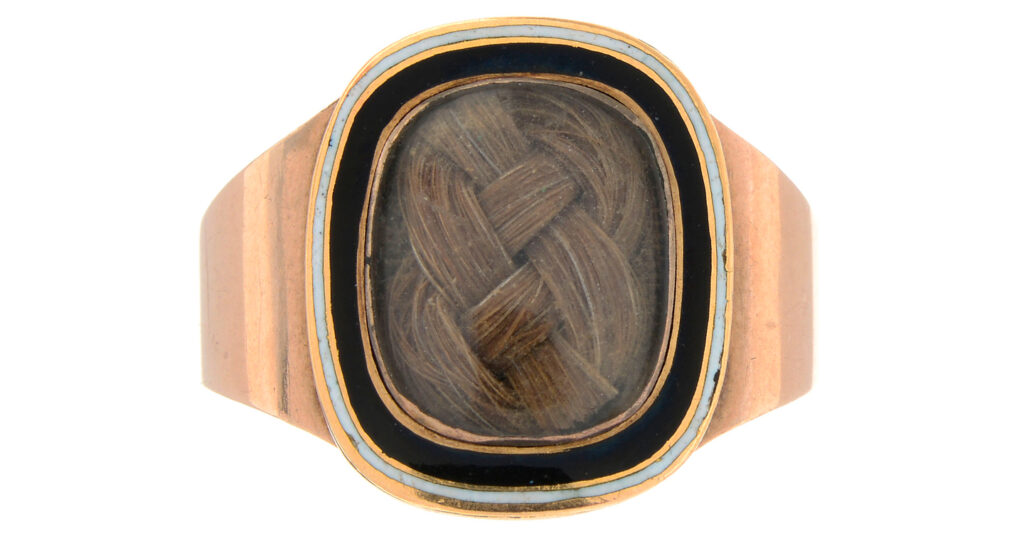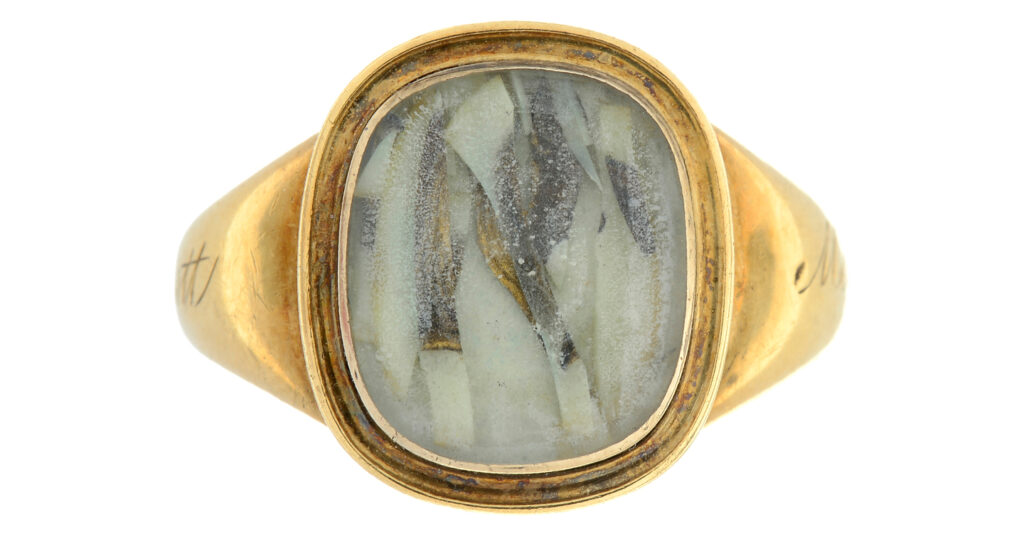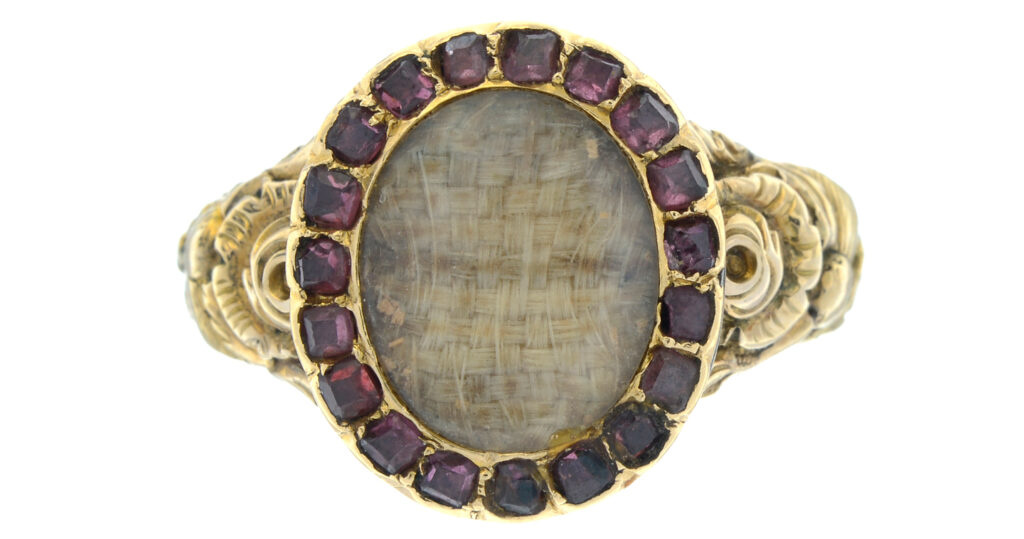“Let virtue Rule Affection” Posie/Poesy Ring
Here, we see popular art and design have its influence on a posie ring and announce a change in sentimental jewels of the latter 17th and 18th centuries.
A healthy understanding of jewellery design over time is needed to easily identify a particular jewel, which makes posie rings difficult to identify due to their often lack of design elements. The typical posie is nothing more than a simple band with the inscription inside, which makes this ring so important to understand.
Sentimentality went through a remarkable change in the mid 17th century. With the execution of Charles I, the English Civil War and subsequent Restoration, the immediacy of mortality was a factor that faced society, as it challenged the religious concepts which defined the final rewards that came from living a virtuous life. Within the paradigm of the Age of Enlightenment, the questions raised, along with the uncertain political/monarchial stability led the way for sentimental jewellery to flourish and cement relationships between people and enforce the wearing of a jewel for memory. This can be seen in the wearing of hair and portraits, with hidden jewels, such as lockets, becoming a popular way of hiding a keepsake from a loved one.
While earlier posies were a direct message to a friend, potential spouse or family member, the pride of the sentiment was becoming a popular feature, moving from the inside of the jewel to the outside in the latter 17th and 18th centuries. With this ring, we see the design element show the requirements of personal fashion. This is a ring that could be worn with the Baroque designs that were popular for their times, showing a high influence of floral and the organic. A ring with these designs could accommodate the hair compartment on the bezel or show the gold wire cypher. This was a time when sentimentality was becoming the new personal establishment within society; the projection of love for another was an element of pride that was fashionable.
What we can see from this ring are the elements of white enamel. White enamel was popular in 17th-19th century jewels for the meaning of virginity and purity, often resigned to mourning jewels, but not exclusive to them. As a token of betrothal, this ring would come back to the elements of being pure and honouring this virtue to uphold the concept of love. With many pieces of this period, virtue is the standard which sets the concept of a relationship between two people; through betrothal or friendship, this unity is signified within the giving of a ring.
Where the ring is important, in terms of its construction, is that the message wasn’t placed outside of the band, as many of the Rococo pieces in the post c.1720 period were written around the edge of the band, set with enamel. This ring shows a very crude etching to the dedication, which makes it even more special. At a time when rings were more likely to be bought, rather than singularly commissioned, this piece could have the inscription as a dedication after it was purchased. From a personal standpoint, the message means more from the giver, as it was perhaps chosen directly for the loved one.
A remarkable ring for its times and one that still remains virtuous today. For a culture that believed in the sanctity of love and the concept of the relationship, it goes beyond all the affectations of love and hopes that virtue and affection will define a connection between two people.




